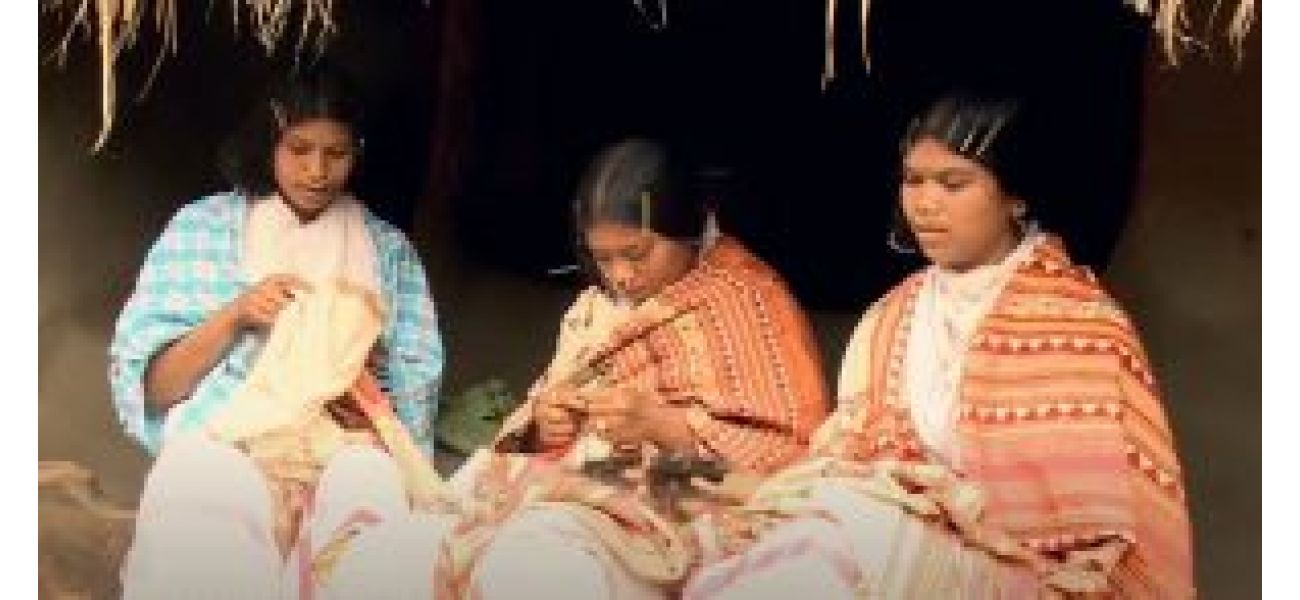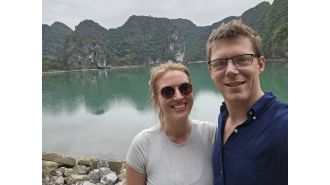13 vulnerable tribal groups in Odisha (PVTGs)
Odisha, a diverse state, has 13 Particularly Vulnerable Tribal Groups (PVTGs) who are classified by the Indian government as more vulnerable than other Scheduled Tribes. These tribes have unique traditions, customs, and livelihoods.
September 22nd 2024.

Odisha, a state known for its rich cultural diversity, is home to 13 Particularly Vulnerable Tribal Groups (PVTGs). These groups, classified by the Indian government, are considered to be more vulnerable than other Scheduled Tribes. Each of these tribes represents a unique part of India's indigenous heritage, with distinct traditions, customs, and ways of life. Despite their small population, their cultural significance is immense. So, let us take a look at these tribes and their lifestyles as they continue to navigate the modern world.
Firstly, we have the Birhor tribe, also known as Mankidi and Mankirdia, who mainly reside in the Sambalpur and Sundargarh districts. With a population of just 203, they live in small, scattered hamlets. The name Birhor translates to "forest people" and they share cultural similarities with the Munda and Santal tribes. Traditionally, the Birhor led semi-nomadic lives, building temporary shelters from sal leaves. Music and dance play a significant role in their lifestyle, with each dance, such as the Dong or Lagre, being associated with important events. In recent years, the Birhor have settled in more permanent villages and have started practicing agriculture in addition to their traditional occupation of making ropes from siali bark and trapping small animals.
Next, we have the Bonda Poraja tribe, who reside in the hills of Malkangiri. With a population of 6,675, the Bonda are renowned for their unique culture. The Bonda women, in particular, are known for their distinctive attire, with a ringa and heavy aluminum neckbands and bead necklaces being a part of their traditional dress. Their primary means of sustenance is shifting and wetland cultivation, where they grow crops such as paddy, millets, and oilseeds. The Bonda women are actively involved in commercial transactions, while the men are skilled hunters and marksmen, fiercely defending their honor.
Moving on, we have the Chuktia Bhunjia tribe, who live in the Sunabeda plateau in Nuapara. The tribe is divided into two clans, Chuktiya and Chinda, and their culture involves elaborate rituals such as seed sanctification and mahua collection. Their primary occupations include shifting cultivation, cattle rearing, and bamboo weaving. The Chuktia Bhunjias are known for their unique sacred kitchen sheds, which are separate from their main dwellings. They also have a passion for cockfighting, a popular sport in their community. As of 2011 Census, their population stands at 2,378.
Next, we have the Didayi tribe, who reside in the Konda Kamberu hills of Malkangiri. Their strong inter-tribal connection with the Bonda tribe, whom they consider their elder brothers, is reflective of their deep bonds. Like many of the other tribes, shifting cultivation is their primary livelihood, supplemented by the collection of forest produce such as fruits and mushrooms. However, in recent years, horticulture and kitchen gardening have gained popularity among the Didayi, with crops like papaya, banana, tobacco, and tamarind thriving in their villages. As per the 2011 Census data, their population stands at 7,250.
The Dongria Kondh tribe, with a population of 8,848, resides in the Niyamgiri hill ranges of Rayagada. They are known for their exceptional horticultural skills, cultivating fruits like banana and pineapple on the hill slopes. Shifting cultivation is also a significant part of their livelihood, as they heavily rely on the forest for their survival. The name Dongria Kondh, derived from the Telugu word "Konda" meaning hill, reflects their identity as hill dwellers.
The Hill Kharia, also known as Pahari Kharia, live in isolated areas of Odisha. Traditionally, they were hunter-gatherers, but now they collect forest products such as resin, honey, and tussar cocoons, and also engage in small-scale agriculture. Their festivals are incomplete without their traditional dances, especially the Jumar, and their music, accompanied by instruments like the Changu. The youth in their community also enjoy cockfighting, which brings them together in celebration. As per the 2011 Census, their population stands at 1,908.
Lastly, we have the Juang tribe, whose population stands at 14,391. They reside in the Keonjhar and Sundargarh districts of Odisha. Like many other tribes, the Juang also practice shifting cultivation and collect forest produce such as fruits and honey. Their festivals are a vibrant display of their traditions and customs, with music and dance being an integral part. The Juang are known for their unique musical instrument, the "Murli," which is played during their festivals and ceremonies.
In conclusion, the Particularly Vulnerable Tribal Groups of Odisha represent a crucial part of India's indigenous heritage, with their unique cultures and ways of life. Despite the challenges of the modern world, these tribes continue to preserve and celebrate their traditions, customs, and livelihoods, adding to the diverse cultural landscape of the state.
Odisha, a state known for its rich cultural diversity, is home to 13 Particularly Vulnerable Tribal Groups (PVTGs). These groups, recognized by the Indian government, are considered more vulnerable than other Scheduled Tribes. Each of these tribes holds a unique place in India's indigenous heritage, with distinct traditions, customs, and ways of life. Despite their small population, their cultural significance is immense. Let us take a closer look at these tribes, their lifestyles, and how they navigate the modern world.
One of the tribes that call Odisha home is the Birhor tribe, also known as Mankidi and Mankirdia. They mainly reside in the Sambalpur and Sundargarh districts, with a population of just 203. The name Birhor translates to "forest people," and they share cultural similarities with the Munda and Santal tribes. Traditionally, the Birhor lived a semi-nomadic life, building temporary huts from sal leaves. Music and dance are essential aspects of their lifestyle, with each dance, such as the Dong or Lagre, being associated with significant events. In recent years, the Birhor have transitioned to more permanent settlements and have started practicing agriculture, in addition to their traditional occupation of making ropes from siali bark and trapping small animals.
The Bonda tribe, with a population of 6,675, resides in the hills of Malkangiri and is known for its unique culture. The women of this tribe are particularly famous for their distinctive attire, which includes a ringa (a type of skirt), heavy aluminum neckbands, and bead necklaces. The Bonda's primary means of sustenance are shifting and wetland cultivation, where they grow crops such as paddy, millets, and oilseeds. The women actively participate in commercial transactions, while the men are skilled hunters and marksmen, fiercely defending their honor.
Another tribe found in Odisha is the Chuktia Bhunjia, who live in the Sunabeda plateau in Nuapara. Divided into the Chuktiya and Chinda clans, the Bhunjia's culture includes elaborate rituals like seed sanctification and mahua collection. Shifting cultivation, cattle rearing, and bamboo weaving are their primary occupations. The Chuktia Bhunjia are known for their unique sacred kitchen sheds, separated from their main dwelling, and their enthusiasm for cockfighting, a popular sport in their community. According to the 2011 Census, their population is 2,378.
The Didayi tribe, with a population of 7,250, resides in the Konda Kamberu hills of Malkangiri. They share a close relationship with the Bonda tribe, whom they consider their elder brothers, reflecting deep inter-tribal connections. Shifting cultivation is their primary livelihood, supplemented by the collection of forest produce like fruits and mushrooms. In recent years, horticulture and kitchen gardening have gained popularity among the Didayi, with crops like papaya, banana, tobacco, and tamarind flourishing in their villages.
The Dongria Kondh tribe, with a population of 8,848, resides in the Niyamgiri hill ranges of Rayagada. They are known for their exceptional horticultural skills, cultivating fruits like banana and pineapple on the hill slopes. Shifting cultivation is a crucial part of their lifestyle, as they heavily rely on the forest for their survival. Their name, derived from the Telugu word Konda, meaning hill, highlights their identity as hill dwellers.
The Hill Kharia, also known as Pahari Kharia, live in isolated areas of Odisha. Traditionally, they were hunter-gatherers, collecting forest products like resin, honey, and tussar cocoons, and engaging in small-scale agriculture. Dances, particularly the Jumar, and music, led by instruments like the Changu, are essential aspects of their festivals. Cockfighting is a popular sport among the youth, bringing the community together in celebration. As per the 2011 Census, their population is 1,908.
Last but not least, we have the Juang tribe, who call Odisha home. With a population of 18,959, they reside in the Keonjhar and Mayurbhanj districts. The Juang people are primarily engaged in agriculture and are known for their skilled cultivation of paddy, maize, and millets. They also engage in activities like hunting, fishing, and gathering forest products. Their festivals are celebrated with great enthusiasm, and their traditional dances, like the Jatra, add color and vibrancy to their culture.
In conclusion, Odisha's PVTGs represent a crucial part of India's indigenous heritage, with each tribe preserving its unique traditions, customs, and livelihoods. Despite facing challenges in the modern world, these tribes continue to thrive, holding on to their cultural significance and adding to the diversity of the state.
Firstly, we have the Birhor tribe, also known as Mankidi and Mankirdia, who mainly reside in the Sambalpur and Sundargarh districts. With a population of just 203, they live in small, scattered hamlets. The name Birhor translates to "forest people" and they share cultural similarities with the Munda and Santal tribes. Traditionally, the Birhor led semi-nomadic lives, building temporary shelters from sal leaves. Music and dance play a significant role in their lifestyle, with each dance, such as the Dong or Lagre, being associated with important events. In recent years, the Birhor have settled in more permanent villages and have started practicing agriculture in addition to their traditional occupation of making ropes from siali bark and trapping small animals.
Next, we have the Bonda Poraja tribe, who reside in the hills of Malkangiri. With a population of 6,675, the Bonda are renowned for their unique culture. The Bonda women, in particular, are known for their distinctive attire, with a ringa and heavy aluminum neckbands and bead necklaces being a part of their traditional dress. Their primary means of sustenance is shifting and wetland cultivation, where they grow crops such as paddy, millets, and oilseeds. The Bonda women are actively involved in commercial transactions, while the men are skilled hunters and marksmen, fiercely defending their honor.
Moving on, we have the Chuktia Bhunjia tribe, who live in the Sunabeda plateau in Nuapara. The tribe is divided into two clans, Chuktiya and Chinda, and their culture involves elaborate rituals such as seed sanctification and mahua collection. Their primary occupations include shifting cultivation, cattle rearing, and bamboo weaving. The Chuktia Bhunjias are known for their unique sacred kitchen sheds, which are separate from their main dwellings. They also have a passion for cockfighting, a popular sport in their community. As of 2011 Census, their population stands at 2,378.
Next, we have the Didayi tribe, who reside in the Konda Kamberu hills of Malkangiri. Their strong inter-tribal connection with the Bonda tribe, whom they consider their elder brothers, is reflective of their deep bonds. Like many of the other tribes, shifting cultivation is their primary livelihood, supplemented by the collection of forest produce such as fruits and mushrooms. However, in recent years, horticulture and kitchen gardening have gained popularity among the Didayi, with crops like papaya, banana, tobacco, and tamarind thriving in their villages. As per the 2011 Census data, their population stands at 7,250.
The Dongria Kondh tribe, with a population of 8,848, resides in the Niyamgiri hill ranges of Rayagada. They are known for their exceptional horticultural skills, cultivating fruits like banana and pineapple on the hill slopes. Shifting cultivation is also a significant part of their livelihood, as they heavily rely on the forest for their survival. The name Dongria Kondh, derived from the Telugu word "Konda" meaning hill, reflects their identity as hill dwellers.
The Hill Kharia, also known as Pahari Kharia, live in isolated areas of Odisha. Traditionally, they were hunter-gatherers, but now they collect forest products such as resin, honey, and tussar cocoons, and also engage in small-scale agriculture. Their festivals are incomplete without their traditional dances, especially the Jumar, and their music, accompanied by instruments like the Changu. The youth in their community also enjoy cockfighting, which brings them together in celebration. As per the 2011 Census, their population stands at 1,908.
Lastly, we have the Juang tribe, whose population stands at 14,391. They reside in the Keonjhar and Sundargarh districts of Odisha. Like many other tribes, the Juang also practice shifting cultivation and collect forest produce such as fruits and honey. Their festivals are a vibrant display of their traditions and customs, with music and dance being an integral part. The Juang are known for their unique musical instrument, the "Murli," which is played during their festivals and ceremonies.
In conclusion, the Particularly Vulnerable Tribal Groups of Odisha represent a crucial part of India's indigenous heritage, with their unique cultures and ways of life. Despite the challenges of the modern world, these tribes continue to preserve and celebrate their traditions, customs, and livelihoods, adding to the diverse cultural landscape of the state.
Odisha, a state known for its rich cultural diversity, is home to 13 Particularly Vulnerable Tribal Groups (PVTGs). These groups, recognized by the Indian government, are considered more vulnerable than other Scheduled Tribes. Each of these tribes holds a unique place in India's indigenous heritage, with distinct traditions, customs, and ways of life. Despite their small population, their cultural significance is immense. Let us take a closer look at these tribes, their lifestyles, and how they navigate the modern world.
One of the tribes that call Odisha home is the Birhor tribe, also known as Mankidi and Mankirdia. They mainly reside in the Sambalpur and Sundargarh districts, with a population of just 203. The name Birhor translates to "forest people," and they share cultural similarities with the Munda and Santal tribes. Traditionally, the Birhor lived a semi-nomadic life, building temporary huts from sal leaves. Music and dance are essential aspects of their lifestyle, with each dance, such as the Dong or Lagre, being associated with significant events. In recent years, the Birhor have transitioned to more permanent settlements and have started practicing agriculture, in addition to their traditional occupation of making ropes from siali bark and trapping small animals.
The Bonda tribe, with a population of 6,675, resides in the hills of Malkangiri and is known for its unique culture. The women of this tribe are particularly famous for their distinctive attire, which includes a ringa (a type of skirt), heavy aluminum neckbands, and bead necklaces. The Bonda's primary means of sustenance are shifting and wetland cultivation, where they grow crops such as paddy, millets, and oilseeds. The women actively participate in commercial transactions, while the men are skilled hunters and marksmen, fiercely defending their honor.
Another tribe found in Odisha is the Chuktia Bhunjia, who live in the Sunabeda plateau in Nuapara. Divided into the Chuktiya and Chinda clans, the Bhunjia's culture includes elaborate rituals like seed sanctification and mahua collection. Shifting cultivation, cattle rearing, and bamboo weaving are their primary occupations. The Chuktia Bhunjia are known for their unique sacred kitchen sheds, separated from their main dwelling, and their enthusiasm for cockfighting, a popular sport in their community. According to the 2011 Census, their population is 2,378.
The Didayi tribe, with a population of 7,250, resides in the Konda Kamberu hills of Malkangiri. They share a close relationship with the Bonda tribe, whom they consider their elder brothers, reflecting deep inter-tribal connections. Shifting cultivation is their primary livelihood, supplemented by the collection of forest produce like fruits and mushrooms. In recent years, horticulture and kitchen gardening have gained popularity among the Didayi, with crops like papaya, banana, tobacco, and tamarind flourishing in their villages.
The Dongria Kondh tribe, with a population of 8,848, resides in the Niyamgiri hill ranges of Rayagada. They are known for their exceptional horticultural skills, cultivating fruits like banana and pineapple on the hill slopes. Shifting cultivation is a crucial part of their lifestyle, as they heavily rely on the forest for their survival. Their name, derived from the Telugu word Konda, meaning hill, highlights their identity as hill dwellers.
The Hill Kharia, also known as Pahari Kharia, live in isolated areas of Odisha. Traditionally, they were hunter-gatherers, collecting forest products like resin, honey, and tussar cocoons, and engaging in small-scale agriculture. Dances, particularly the Jumar, and music, led by instruments like the Changu, are essential aspects of their festivals. Cockfighting is a popular sport among the youth, bringing the community together in celebration. As per the 2011 Census, their population is 1,908.
Last but not least, we have the Juang tribe, who call Odisha home. With a population of 18,959, they reside in the Keonjhar and Mayurbhanj districts. The Juang people are primarily engaged in agriculture and are known for their skilled cultivation of paddy, maize, and millets. They also engage in activities like hunting, fishing, and gathering forest products. Their festivals are celebrated with great enthusiasm, and their traditional dances, like the Jatra, add color and vibrancy to their culture.
In conclusion, Odisha's PVTGs represent a crucial part of India's indigenous heritage, with each tribe preserving its unique traditions, customs, and livelihoods. Despite facing challenges in the modern world, these tribes continue to thrive, holding on to their cultural significance and adding to the diversity of the state.
[This article has been trending online recently and has been generated with AI. Your feed is customized.]
[Generative AI is experimental.]
0
0
Submit Comment





